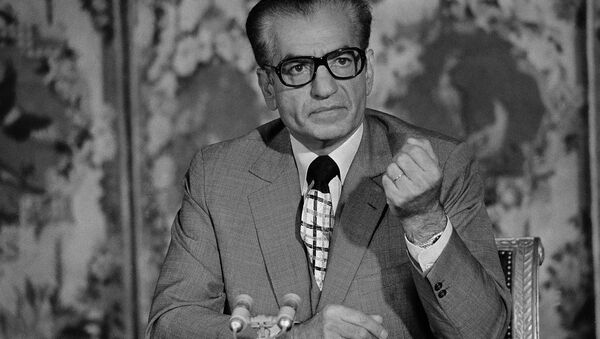On August 19, 1978 the Cinema Rex in the port city of Abadan was packed with Iranian film fans enjoying the acclaimed movie Gavaznha (The Deers) when four men barred the exits and set fire to the building with gasoline.
Panic rapidly set in and many of those who died were overcome with toxic fumes long before the flames reached them.
The heat was so intense the firefighters could not initially get close to the cinema and it took them six hours to bring the fire under control.
IN IRAN FROM THE HISTORY OF THIS DAY 19 AUGUST 1978 – In Iran, Cinema Rex fire caused more than 400 deaths. pic.twitter.com/JKPPn0raZt
— BD (@bcessay) 19 August 2017
Up to 800 Killed
Estimates of the number killed ranges from 377 to 800 but Amnesty International said there were 438 victims.
Rumors at the time suggested the Shah's US-trained secret police, the Savak, were responsible with one theory suggesting they had chased some suspects into the cinema and when their quarry hid in the crowd they decided to smoke them out by starting the fire.
Takbalizadeh and five others were hanged in public after being convicted of the crime.
But in 2001 the Iranian newspaper Sobhe Emrooz published an article suggesting supporters of the exiled Islamic cleric of Ayatollah Ruhollah Khomeini were actually to blame. Sobhe Emrooz was shut down by the regime soon afterwards.
Whatever the truth is, it certainly was the beginning of the end for the Shah.
Furious Protesters Blame Shah
Tens of thousands of people took to the streets of Abadan and Tehran shouting "Burn the Shah!" and "The Shah is guilty!"
Demonstrations against Shah Reza Pahlevi — a dictatorial monarch backed by Washington — had been going on intermittently since October 1977 with protests by Shia Muslim clerics, secular and left-wing activists and supporters of western-style democracy.
But after the Cinema Rex fire the protests and rallies got bigger and bigger until eventually, in January 1979, the Shah threw in the towel and flew into exile in Egypt, where he would die of cancer the following year.
On February 1, 1979 Khomeini flew back from exile in France and set about creating the Islamic Republic of Iran, which has survived to this day.
In an introduction to Majid Ahmadiyan's book, The Catastrophe of Cinema Rex: the Fire of the Islamic Revolution, Mahmoud Moradkhani Tehrani, whose father Ayatollah Ali Tehrani was the judge at Takbalizadeh's trial, recalled what really happened after the fall of the Shah and the return of Khomeini.
He said Takbalizadeh had been thumbing through a newspaper when he saw his photograph with the caption: "The Shah's intelligence organization official, who set fire to Cinema Rex."
The Strange Story Of The Arsonist
Concerned that he might be lynched and wanting to set the record straight, Takbalizadeh contacted officials of the new regime and pointed out he had never worked for Savak and had in fact started the blaze on the orders of local Islamic clerics in Abadan, who hoped it would be blamed on the Shah.
"He is told to return to his home until they contact him. However, no one contacts him. The relatives of those who had burned in the theater fire are dumbfounded when they observe that the new regime does not pursue the case. Thus they form an association. The representatives of the association meet with municipal officials as well as with Ayatollah Khomeini. However, upon meeting with cold reactions they become suspicious," wrote Dr. Moradkani.
On August 20, 1978, in the Cinema Rex fire, the Cinema Rex in Abadan, Iran, was set ablaze, killing approximately 500 individuals by the Islamic revolutionary merceneries. Iranians have not forgotten that!! #IranProtests #تظاهرات_سراسرى @ShahinSartipi pic.twitter.com/WEbZjwtdbk
— Darya (@D62Darya) 31 December 2017
"During the trial the relatives of the victims began to understand the facts and reached the conclusion that Takbalizadeh was no more than a naïve and deceived pawn in the plot, and become certain that the clergy wished to eliminate him," said Mr. Moradkani, whose father was removed from the trial and replaced with a Khomeini loyalist, who forged ahead with the conviction and execution of Takbalizadeh.
Two weeks after the executions Iraq invaded and Iraqi forces conquered nearby Khorramshahr and besieged Abadan.
The Iran-Iraq War dragged on for another eight years and by the time it had ended the Cinema Rex fire had been long forgotten.


